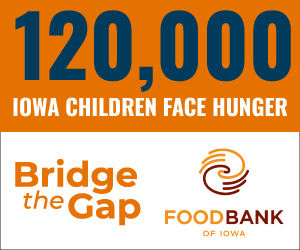What’s the outlook for the labor market in the months ahead?

JOE GARDYASZ Aug 26, 2021 | 3:49 pm
3 min read time
761 wordsAll Latest News, HR and Leadership, Retail and BusinessNow that students are returning to the classroom around the country and more employers are announcing return-to-work plans, businesses can expect somewhat of an easing of the tight labor market as the economy moves into its recovery phase, according to a webinar on Tuesday hosted by Wells Fargo.
Mark Vitner, a managing director and senior economist for Wells Fargo’s Corporate and Investment Bank, was joined by Sarah House, a director and senior economist with Wells Fargo who follows the labor market, inflation trends and business investment. They titled their presentation “Back to School, Back to Work. Back to Normal?”
The pandemic recession was a much different recession than in 2008, so expect a somewhat unusual recovery, the economists said.
“One of the things unusual about this recession is how quickly [gross domestic product] has recovered,” Vitner said. The economy is already back in the expansion phase, and in the next few quarters GDP will probably return to pre-pandemic levels, he said.
Several factors that were holding back labor market participation will soon be changing, they noted. Among them is the upcoming end in early September to the additional $300 federal unemployment payments that some states are still paying out.
Under the CARES Act, all states provided 13 additional weeks of federally funded Pandemic Emergency Unemployment Assistance benefits to people who exhausted their regular state benefits, followed by additional weeks of federally funded benefits in states with high unemployment. Under that federal legislation, some workers who exhausted their benefits and many others who lost their jobs for reasons arising from the pandemic but who were not normally eligible for unemployment payments were eligible for federally funded Pandemic Unemployment Assistance. Successive legislation, most recently the American Rescue Plan Act, extended the availability of PUA and PEUC through the week ending Sept. 6.
Vitner believes that the additional pandemic unemployment payments were the largest contributor to reduced workforce participation among lower-wage workers. Gov. Kim Reynolds opted to stop accepting the federal money for issuance to Iowa workers in mid-June this year.
States with relatively low unemployment rates tended to see the greatest negative impact on labor force participation from the additional $300 per month payments, Vitner said. “Because workers feel there is no rush [to get back into the labor market], they can take their time because they have so many opportunities.”
Another factor this fall that should benefit labor market participation is a move back to the office by many companies. Although some businesses are now postponing return-to-office plans due to the delta variant of the coronavirus, “my sense is that firms are going to bring people back in October and aren’t going to wait longer than that,” Vitner said.
While a rebound in employment occurred fairly quickly following the initial COVID surge last year, the U.S. is now in a tougher phase of the recovery, the economists said. The reason: Now most people who are out of work are adjusting from permanent, rather than temporary, job losses. The time lag in retraining for new positions in many situations will contribute to a slower overall recovery.
The pandemic’s effect on labor force participation nationwide was much more pronounced for women, House said, in large part because they most often have the caretaking role and often have a job with secondary income. An estimated 1.1 million women left the workforce as a result, she said. A contributing headwind has been that child-care center employment is still down 11% compared to pre-pandemic levels.
“As the school year begins, there seems to be a bigger priority by parents to get their kids back in the classrooms,” House said. At the same time, the surge in COVID cases may cause some parents to delay reentering the workforce until they’re certain that their kids will be back to school to stay without further lockdowns.
Wages are also seeing upward pressure, as restaurant and hospitality chains are competing with retailers and online sellers offering warehouse and delivery positions with higher pay, which to some extent is also affecting manufacturers’ ability to attract workers.
Overall, some of the factors that had been constraining the labor market are easing, “so we’re expecting labor force participation to increase pretty handily in the next six months,” House said.
Wage growth should also cool off as some of the fevered pace of hiring begins to ease when labor supply and demand becomes more balanced, she said. In all, it should be a “relatively quick recovery” with the return of essentially all of the 22 million jobs lost within three years of the pandemic’s onset.









